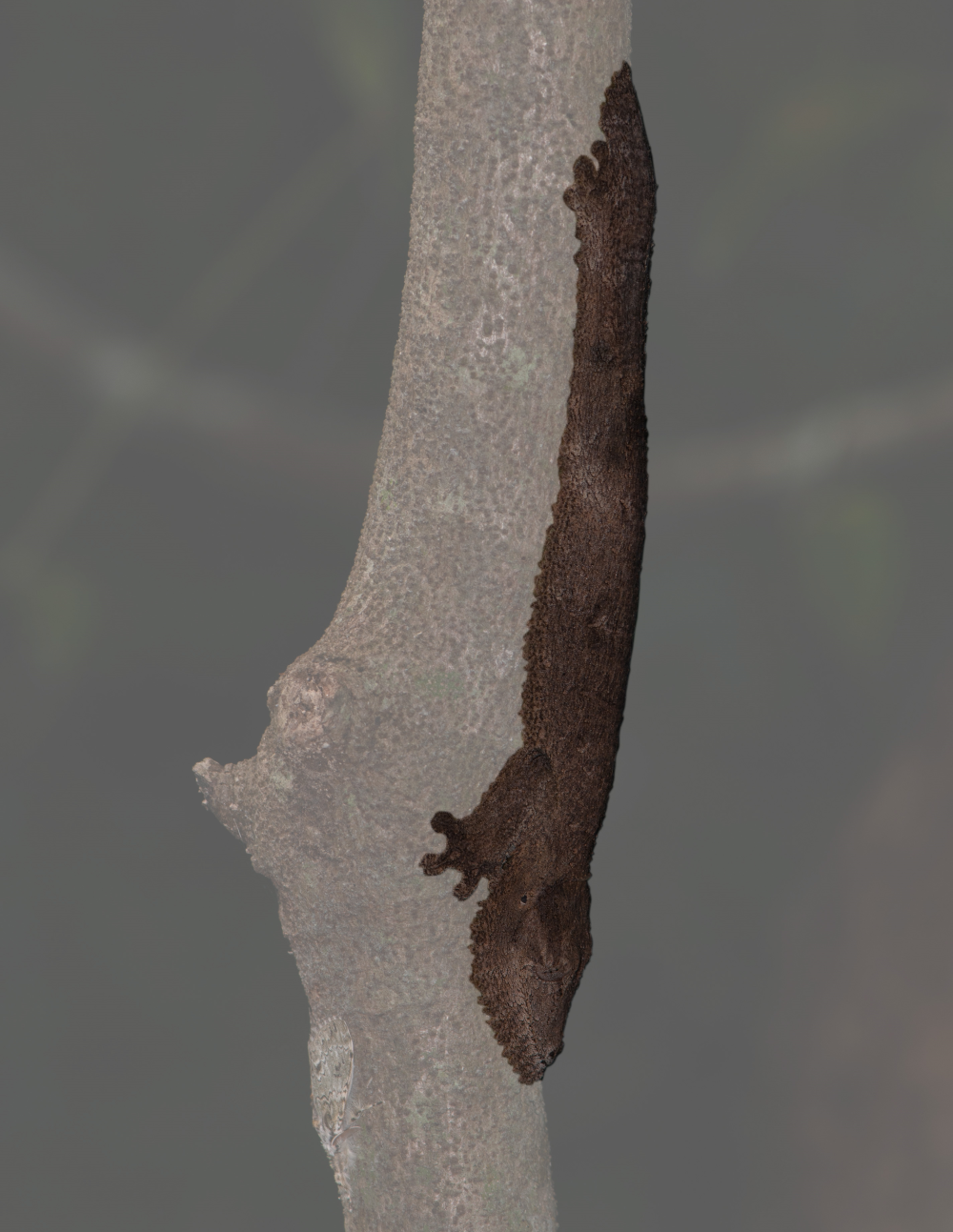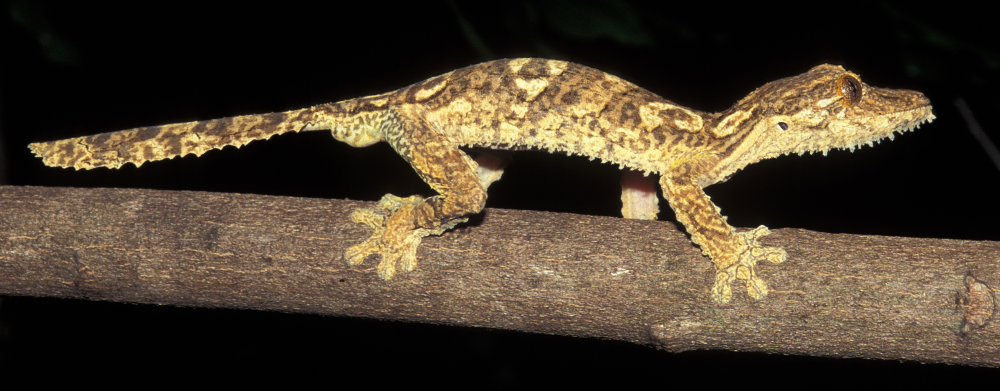A master of disguise has just been discovered in Madagascar, where eagle-eyed researchers came across a new species of leaf-tailed gecko. As their name would suggest, these animals are remarkably good at blending in with botanical species, and it took us a hot minute to find the damn thing in the photo.
If you’re wondering how on Earth scientists find new species like this one, the fact is this particular gecko has been on their minds for over two decades.
“When we first discovered this species in 2000, we already suspected it might be new to science,” said lead author of the study Dr Frank Glaw in a statement, who is curator of herpetology at the Bavarian State Collection of Zoology. “But it has taken us many years to amass enough information to confidently describe it as a new species.”
The leaf-tailed gecko looked very similar to a species already known to science as Uroplatus henkeli, something the team say is a common obstacle when working with these animals, especially within their study region.

The big reveal shows where Uroplatus garamaso was hiding, as well as its correct resting position.
Image credit: Dr. Mark D. Scherz, Natural History Museum of Denmark
“This is quite common for reptiles from Madagascar,” explains Dr Jörn Köhler of the Hessisches Landesmuseum Darmstadt. “There are a lot of these so-called ‘cryptic species’, which are waiting for taxonomic treatment.”
That taxonomic treatment combines genetic, morphological, and distribution data collection to better understand where to place it on the gecko family tree. Careful analysis eventually led to the conclusion that they were looking at a new-to-science species, and it’s been named Uroplatus garamaso.
A crucial detail was literally on the tip of their tongues, as it was discovered that while U. henkeli had a black-tipped tongue, U. garamaso’s was pink. As for why that is, the team isn’t exactly sure.

Uroplatus garamaso on the move.
Image credit: Dr. Jörn Köhler, Hessisches Landesmuseum Darmstadt, Germany
“The mouth colour, which has been so useful to identify different species, has a totally unknown function,” said Dr Mark Scherz, curator of herpetology at the Natural History Museum of Denmark. “There is a lot we still do not know about these geckos, from their broader evolutionary relationships to their behaviour.”
Leaf-tailed geckos join great gray owls in being harder to spot in an image than that wandering wally, Where’s Waldo? The geckos have evolved skin flaps and flattened tails that enable them to sucker onto the edge of tree trunks, being near-invisible as they rest upside-down throughout the day. Come night, they’re free to wander under cover of darkness, before returning to live their best bark life.
The study is published in the German Journal of Herpetology.
Source Link: Can You Spot The New Gecko Species? Its Camouflage Is Absurdly Good